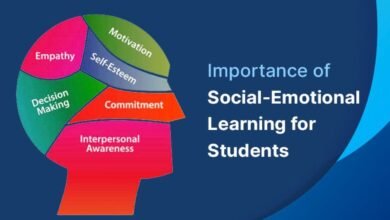How to Address the Digital Divide in Education

Understanding the Digital Divide
The digital divide is a multifaceted issue that encompasses not only the gap between those who have access to digital technologies and those who do not but also the disparity in the quality of digital resources and skills. This divide can significantly impact educational opportunities, shaping the learning experiences and future prospects of students. Understanding the digital divide requires recognizing both the access divide, which pertains to the availability of technology and internet connectivity, and the skills divide, which refers to the varying levels of digital literacy and the ability to effectively use technology. In educational contexts, the digital divide can result in unequal access to online learning resources, disparities in students’ ability to complete digital assignments, and differences in teachers’ capacity to integrate technology into their teaching methods.
To address the digital divide effectively, it is crucial to explore and tackle both these dimensions comprehensively. This includes expanding infrastructure to ensure that all students have access to reliable internet and devices, as well as implementing programs to enhance digital literacy and skills. Bridging the gap requires a concerted effort from governments, educational institutions, and communities to ensure that technology serves as an equalizer rather than a barrier. As educational technology continues to evolve, ongoing assessment and intervention will be necessary to address emerging disparities and ensure that all students can benefit from digital learning opportunities.
Expanding Access to Technology and Internet
One of the most pressing issues in addressing the digital divide is ensuring equitable access to technology and reliable internet connectivity. Many students in low-income households or rural areas face significant barriers to accessing the devices and internet connections necessary for digital learning. To bridge this gap, several strategies can be employed.
Infrastructure Development
Investing in infrastructure development is crucial for expanding access. Governments and local authorities can partner with telecommunications companies to enhance broadband coverage in underserved areas. Initiatives such as subsidizing internet service costs or providing low-cost, high-speed internet options can also make a significant difference. In many regions, community Wi-Fi hotspots, often set up in collaboration with local libraries or community centers, can offer a temporary solution to connectivity issues.
Device Distribution Programs
In addition to improving internet access, ensuring that students have access to appropriate devices is essential. Schools and educational organizations can implement device distribution programs, providing tablets, laptops, or Chromebooks to students in need. Partnerships with tech companies and non-profit organizations can help facilitate these programs, often through donations or discounted technology.
Support for Schools and Teachers
Schools also play a pivotal role in addressing the digital divide. Investment in digital infrastructure within schools, such as modern computer labs and reliable Wi-Fi networks, can help bridge the gap for students who lack resources at home. Training for teachers on how to use technology effectively in the classroom can ensure that digital tools are utilized to their full potential, benefiting all students. Schools should also offer tech support for students and families, helping them troubleshoot issues and navigate digital platforms.
Enhancing Digital Literacy and Skills
Even with access to technology, students need the skills to use digital tools effectively. Enhancing digital literacy involves not only teaching students how to operate devices and navigate online platforms but also equipping them with critical thinking and problem-solving skills related to technology use. This requires a multi-pronged approach.
Integrating Digital Literacy into the Curriculum
Digital literacy should be integrated into the school curriculum from an early age. Educational standards can include digital literacy as a core component, ensuring that students learn essential skills such as online research techniques, understanding digital citizenship, and managing digital information. Schools can incorporate project-based learning that involves technology, encouraging students to apply their skills in real-world contexts.
Professional Development for Educators
Teachers also need ongoing professional development to stay abreast of technological advancements and integrate them effectively into their teaching practices. Professional development programs should focus on equipping educators with strategies for teaching digital literacy, using educational technology to enhance learning, and addressing common challenges students may face. Support networks and communities of practice can provide teachers with resources and peer support.
Family and Community Engagement
To reinforce digital literacy, engaging families and communities is crucial. Schools can offer workshops and resources for parents and guardians to help them support their children’s digital learning at home. Community organizations can also play a role by providing digital literacy programs for all age groups, fostering a culture of lifelong learning and technological proficiency.
Addressing Equity in Educational Technology
Equity in educational technology goes beyond simply providing access and skills; it involves ensuring that all students, regardless of their background, can benefit from technology in a meaningful way. Addressing equity requires a focus on several key areas.
Culturally Responsive Technology Integration
Technology should be integrated into education in a way that is culturally responsive and inclusive. This involves selecting and using educational technology that reflects diverse perspectives and experiences. Curricula and digital resources should be inclusive of various cultures and backgrounds, promoting a sense of belonging and relevance for all students.
Support for Special Needs Students
Students with disabilities or special needs may face additional challenges in accessing and using technology. Schools and educational institutions should ensure that digital tools and resources are accessible to all students by following best practices for inclusive design and providing accommodations as needed. This can include assistive technologies, personalized learning platforms, and tailored support services.
Addressing Socioeconomic Disparities
Addressing socioeconomic disparities requires a holistic approach. Schools can collaborate with local organizations and businesses to provide additional support to low-income families, such as access to free or reduced-cost internet service and technology. Financial assistance programs, scholarships, and grants can help bridge the gap for students who might otherwise be excluded from digital learning opportunities.
Monitoring and Evaluating Progress
To ensure that efforts to address the digital divide are effective, it is important to monitor and evaluate progress continuously. This involves collecting data on technology access, usage, and educational outcomes to identify gaps and areas for improvement.
Data Collection and Analysis
Collecting and analyzing data on technology access and usage can help educators and policymakers understand the scope of the digital divide and the impact of various interventions. Surveys, assessments, and usage statistics can provide valuable insights into the challenges faced by students and the effectiveness of different strategies.
Feedback Mechanisms
Establishing feedback mechanisms allows stakeholders, including students, parents, and educators, to provide input on the effectiveness of digital learning initiatives and identify areas for improvement. Regular feedback helps ensure that strategies remain responsive to the evolving needs of students and the educational landscape.
Continuous Improvement
Addressing the digital divide is an ongoing process that requires continuous improvement and adaptation. As technology and educational needs evolve, strategies must be reassessed and updated to ensure they remain effective and equitable. This includes staying informed about new technological developments and emerging best practices in education.
Conclusion
Addressing the digital divide in education is a complex but essential task that requires a comprehensive and collaborative approach. By expanding access to technology and internet connectivity, enhancing digital literacy and skills, ensuring equity in educational technology, and continuously monitoring progress, we can work towards a more inclusive and equitable educational system. The goal is to create an environment where all students, regardless of their background, have the opportunity to succeed and thrive in an increasingly digital world. Through sustained effort and innovation, we can bridge the digital divide and ensure that technology serves as a powerful tool for learning and growth.



